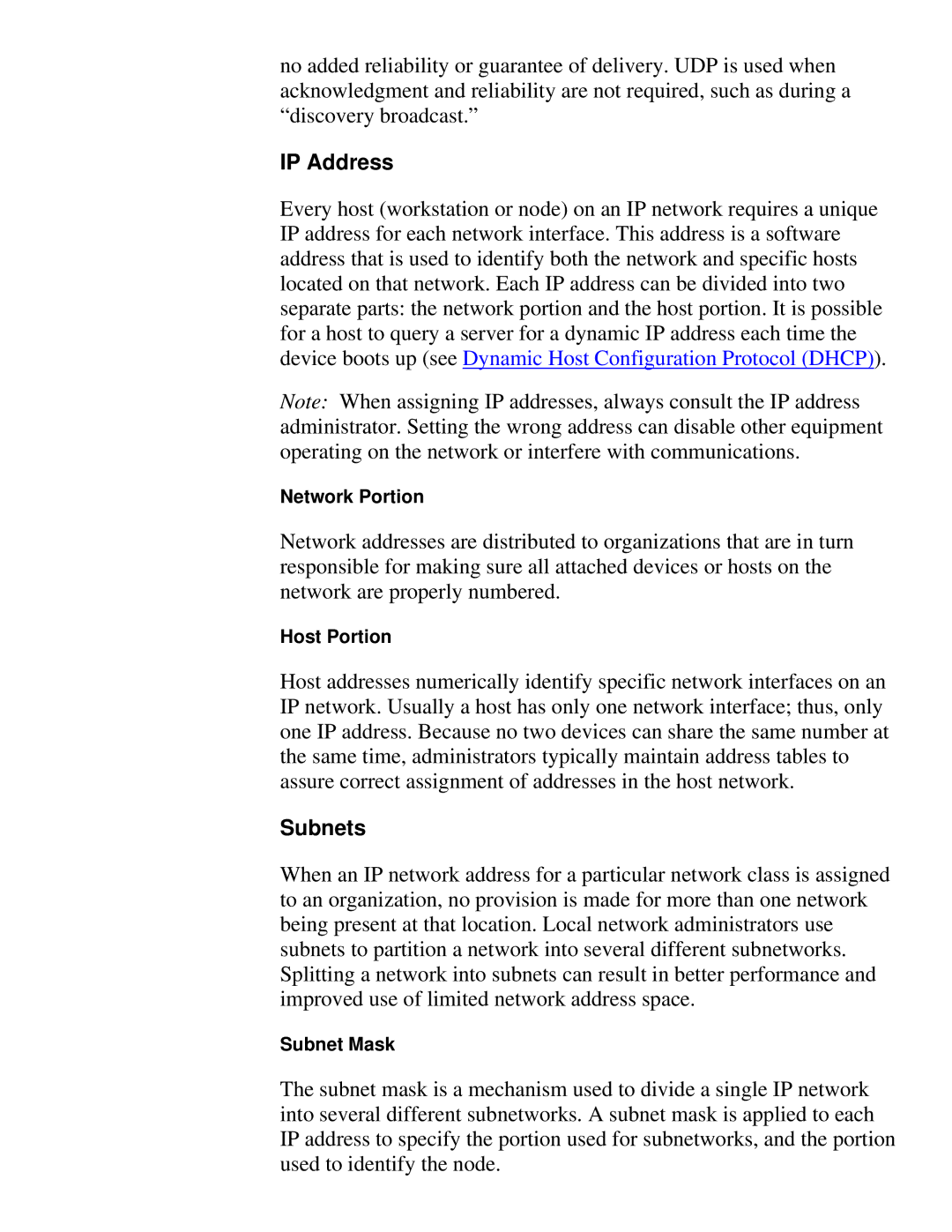no added reliability or guarantee of delivery. UDP is used when acknowledgment and reliability are not required, such as during a “discovery broadcast.”
IP Address
Every host (workstation or node) on an IP network requires a unique IP address for each network interface. This address is a software address that is used to identify both the network and specific hosts located on that network. Each IP address can be divided into two separate parts: the network portion and the host portion. It is possible for a host to query a server for a dynamic IP address each time the device boots up (see Dynamic Host Configuration Protocol (DHCP)).
Note: When assigning IP addresses, always consult the IP address administrator. Setting the wrong address can disable other equipment operating on the network or interfere with communications.
Network Portion
Network addresses are distributed to organizations that are in turn responsible for making sure all attached devices or hosts on the network are properly numbered.
Host Portion
Host addresses numerically identify specific network interfaces on an IP network. Usually a host has only one network interface; thus, only one IP address. Because no two devices can share the same number at the same time, administrators typically maintain address tables to assure correct assignment of addresses in the host network.
Subnets
When an IP network address for a particular network class is assigned to an organization, no provision is made for more than one network being present at that location. Local network administrators use subnets to partition a network into several different subnetworks. Splitting a network into subnets can result in better performance and improved use of limited network address space.
Subnet Mask
The subnet mask is a mechanism used to divide a single IP network into several different subnetworks. A subnet mask is applied to each IP address to specify the portion used for subnetworks, and the portion used to identify the node.
